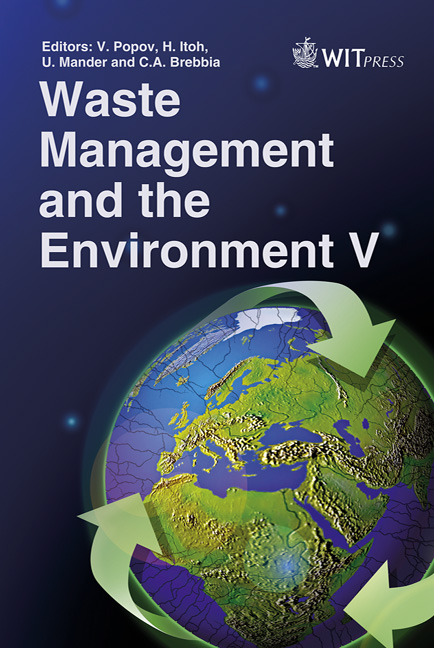Bioplastics Disposal: How To Manage It
Price
Free (open access)
Transaction
Volume
140
Pages
11
Page Range
261 - 271
Published
2010
Size
367 kb
Paper DOI
10.2495/WM100241
Copyright
WIT Press
Author(s)
F. Gironi & V. Piemonte
Abstract
The biodegradable plastics were introduced in the 1980s in order to detect possible renewable feedstock to produce non petroleum-based plastics, as well as to reduce the environmental burdens due to the landfill volume increase. To this end, in the last years different typologies of bioplastics like PHB, PCL, Mater-Bi and PLA were introduced. In order to verify the benefits of bioplastics in comparison to conventional plastics it is necessary to evaluate the environmental impact derived from production, utilization and disposal of the two kinds of material. Nowadays, the most important tool to evaluate the environmental impact of a material (for example bio or conventional plastics) is the life cycle assessment (LCA) that determines the overall impact of a plastic on the environment by defining and analysing several impact indices. In particular, global warming, human toxicity, abiotic depletion, eutrophication, acidification and many other impact indices directly related to the production, utilization and disposal of the plastics studied in this work are considered. In this paper an analysis of the different disposal scenarios (in particular composting and recycling processes) applied to the most important bioplastics currently on the market (PLA made from Nature Works and Mater-Bi made from Novamont), was carried out by using the LCA methodology and by also taking into account the Land Use Change (LUC) emissions. Cost and benefits of the bioplastic disposal were also compared to these of the conventional plastics. Keywords: bioplastics, waste management, Land Use Change, LCA, recycling.
Keywords
bioplastics, waste management, Land Use Change, LCA, recycling





